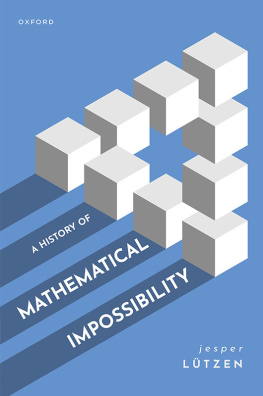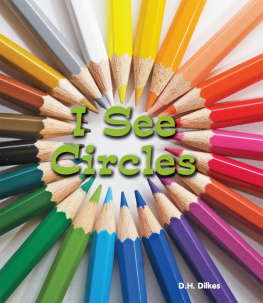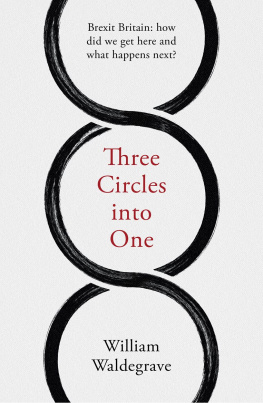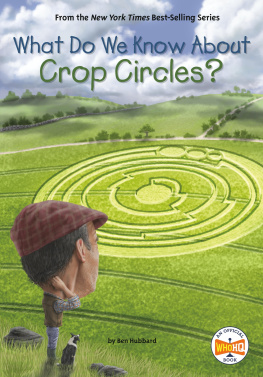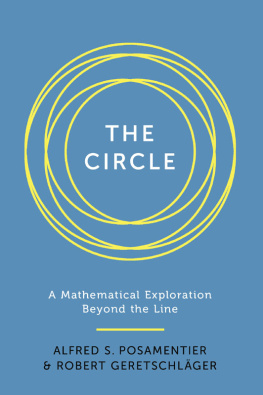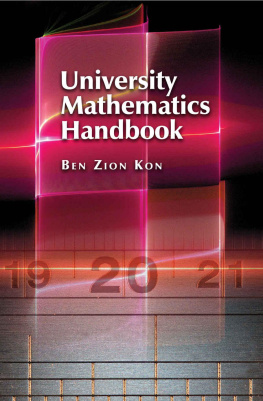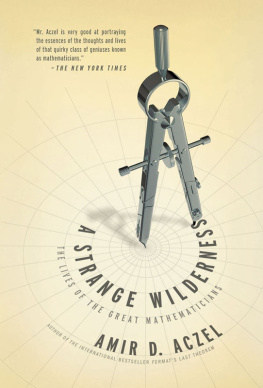CIRCLES DISTURBED
CIRCLES DISTURBED
THE INTERPLAY OF MATHEMATICS AND NARRATIVE
Edited by APOSTOLOS DOXIADIS and BARRY MAZUR

Copyright 2012 by Princeton University Press
Published by Princeton University Press, 41 William Street, Princeton, New Jersey 08540 press.princeton.edu
Jacket illustration: Thomas Degeorge (17861854), The Death of Archimedes, 1815. Courtesy of the Collection of the Muse dArt Roger-Quilliot Museum [MARQ], City of Clermont-Ferrand, France.
All Rights Reserved
Library of Congress Cataloging-in-Publication Data
Circles disturbed: the interplay of mathematics and narrative / edited by Apostolos Doxiadis and Barry Mazur.
p. cm.
Includes bibliographical references and index.
ISBN 978-0-691-14904-2 (hardcover : acid-free paper) 1. MathematicsLanguage. 2. Communication in mathematics. 3. MathematicsHistory. 4. Logic, Symbolic and mathematical. I. Doxiades, Apostolos K., 1953-II. Mazur, Barry.
QA42.C57 2012
510.14dc23
2011037043
British Library Cataloging-in-Publication Data is available
This book has been composed in Minion Pro and Myriad Pro
Printed on acid-free paper.
Typeset by S R Nova Pvt Ltd, Bangalore, India
Printed in the United States of America
10 9 8 7 6 5 4 3 2 1
CONTENTS
AMIR ALEXANDER
PETER GALISON
FEDERICA LA NAVE
COLIN MCLARTY
MICHAEL HARRIS
BARRY MAZUR
TIMOTHY GOWERS
BERNARD TEISSIER
DAVID CORFIELD
APOSTOLOS DOXIADIS
G. E. R. LLOYD
ARKADY PLOTNITSKY
DAVID HERMAN
URI MARGOLIN
JAN CHRISTOPH MEISTER
INTRODUCTION
The words do not disturb my circles are said to be Archimedes last before he was slain by a Roman soldier in the tumult of the pillaging of Syracuse. The timeless tranquil eternity of the not-to-be-disturbed circles in the midst of this account of hurly-burly and death is emblematic of the contrast between mathematics and stories: history, legends, anecdotes, and narratives of all sorts thrive on drama, on motion and confusion, while mathematics requires a clarity of thought that, in many instances, comes only after prolonged quiet reflection. At first glance, then, it might seem that mathematics and narrative have little use for each other, but this is not so. As anyone who teaches the subject knows well, the appropriate narrative helps make its substance more comprehensible, while the lack of a narrative frame may render mathematics indigestible or even, at times, downright incomprehensible.
This dependence of mathematics on narrative is not surprising: after all, mathematics is created by people, and people live, grow, think, and create stories. Stories play crucial roles in our discovering, creating, explaining, and organizing knowledge, and thus mathematics also has a great need for narrative, even though its taste for general ideas might make one forget this. Yet despite this interdependence of mathematics and narrative, until the last few decades there was little attempt to examine the connections between the two domains. Apart from the more traditional source of mathematics-related narratives, the historical and biographical narratives of the development of the field, these connections are revealed in accounts focusing on the drama of the motivations and aspirations of the creators of mathematics, whether such accounts are :
Sometimes passing in front of the hotel he remembered the rainy days when he used to bring his nursemaid that far, on a pilgrimage. But he remembered them without the melancholy that he then thought he would surely some day savor on feeling that he no longer loved her. For this melancholy, projected in anticipation prior to the indifference that lay ahead, came from his love. And this love existed no more.
Happily, in the last few decades much intellectual activity has been trained on the overlap of mathematics and narrative, as manifested in the proliferation of works of fiction and narrative nonfiction that take their subject matter from the world of mathematical research. Mathematicians watch with delight, often tinged with disbelief, as endeavors that were until recently largely unknown, and totally arcane to non-mathematicians, such as research on Fermats last theorem, the Riemann hypothesis or the Poincar conjecture, become the subject of best-selling books or feature in novels, plays, and films whose plots are set in the world of mathematics, both real and fictional.
More important for this book, the interplay of mathematics and narrative is also becoming the subject of theoretical exploration. Historians, philosophers, cognitive scientists, sociologists, and literary theorists, as well as scholars in other branches of the humanities, are now venturing into this previously dark territory, making new discoveries and contributions. Such theoretical exploration of the old yet new connection between mathematics and narrative is the unifying theme of the fifteen essays in this volume, written by scholars from various disciplines. Many of the essays are original contributions in more than one sense of the word as their authors open up new directions of research.
More precisely, six of the essays deal in various ways with the history of mathematics, a discipline that, though it has mathematical ideas at its center, is narrative in form. None of these contributions follows the older approaches, either internalist, in which progress in a scientific field is interpreted solely within its own bounds, or Whig-historical, which sees in the past of mathematics merely a precursor to the mathematics of today. Without disregarding the underlying story of the development of mathematical ideas and techniques, the contributors look at the history of mathematics in more complex ways. Whether they are investigating mathematical people or mathematical ideas or, more often, the two intertwined, their work aims at relating the creation of mathematics within a larger frame, whether historical or biographical, personal or cultural.
A good example of this approach is Amir Alexanders From Voyagers to Martyrs: Toward a Storied History of Mathematics. Storied history may seem redundant, but in Alexanders treatment it certainly is not, especially when storied is read as antithetical to internalist. Writing from a modern tendency in the historiography of mathematics, Alexander presents the history of mathematics almost as tableaux of stories that are structured according to underlying narrative patterns. In his account, these stories are not merely the retelling of events that once happened but play a crucial role in forming the meaning of such events. Alexanders thesis is that the transformation that occurred in mathematics in the late eighteenth and nineteenth centuries was at least partly guided by the form of the underlying stories told about it. Of particular note is the transition from the older narratives, originating in the Renaissance, in which mathematicians such as the creators of the calculus are seen as adventurous explorers, to newer stories of romantic and often doomed visionaries, such as Galois and Cantor.
Peter Galison uses the biographies of two pioneers, the flesh-and-blood mathematical physicist John Archibald Wheeler and the most famous pseudonymous mathematician in history, Nicolas Bourbaki, to show how their respective views of their craft, as well as the mathematics they created, were largely shaped by biographyactual in the first case, invented in the second. According to Galison, each mathematical argument tells a story, one not unrelated to its creators own formative influences. Thus, Wheeler viewed mathematical arguments essentially as compound machines, a disposition quite possibly shaped by his early experiences as a boy growing on a Vermont farm. His childhood fascination with the intricate machinery around him led to his further, adolescent interest in watches, radios, and all sorts of technical contraptions and, eventually, to his thinking about mathematics as machine-like. Very different were the forms of mathematical argument proposed by the group of French mathematicians who published collectively as Nicolas Bourbaki. These were molded by and reflect the refined intellectual, bourgeois environment of Belle poque Paris, ca. 18901914, in which the first members of Bourbaki grew up. In their book on the history of mathematics, the members of Bourbaki discard the until then dominant metaphor of mathematics as an edificea metaphor without which it would be hard to imagine any talk of foundations of mathematicsfor one of a city whose great growth makes necessary the redesign and rebuilding of its central networks of roads and the creation of new, wide avenues capable of carrying the increased outward traffic. As Galison points out, this is an exact model of what had actually happened to Bourbakis own city, Paris, in the mid-nineteenth century, when Georges-Eugne Haussmann demolished whole blocks of old, decrepit buildings in the citys center, as well as the labyrinths of alleys around them, to make way for his new, wide avenues.
Next page


